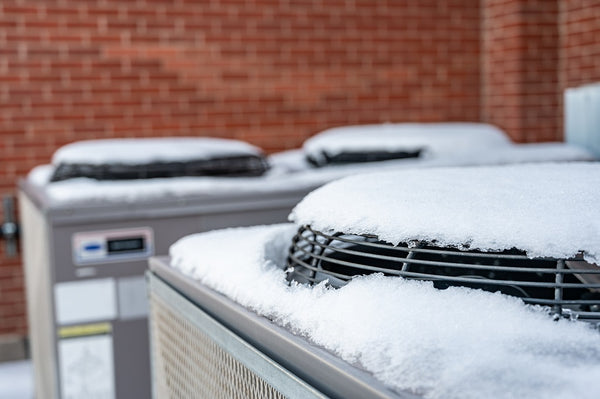
Looking into ventilators in a home but not sure which ventilation type to get? If you’re looking into improving the air quality in a home, you need to know that ventilation is absolutely key. Here’s why:
- Ventilation circulates fresh oxygen throughout your home.
- Our homes tend to trap various unpleasant airborne particles, including cleaning supply chemicals, allergens, and more. The air circulating throughout your home likely contains these types of contaminants.
- Household activities like showering and cooking generate moisture. This moisture, if not dealt with effectively, can increase the relative humidity of your home, leading to problems with mold, condensation, and even dust mites.
- Some newer building materials emit gases, and ventilation can help eliminate them.
- It can keep your home safer because you won’t have to open windows and doors simply to get fresh air.
But what ventilation type should you have installed in your home, and what’s the difference? In this article, we’ll look into both Energy Recovery Ventilators (ERV) and Heat Recovery Ventilators (HRV) and examine the differences between the two.
How Much Ventilation Do I Need?
Before examining the different types of air filters, you’re going to need to figure out how much ventilation you need in your home. If you’re simply planning on waiting to see if you can detect pollutants in your home, that’s a bad idea. It’s very difficult to detect low levels of contaminants in the air, even when they could be potentially harmful. In a perfect world, air ventilators would be able to detect contaminants in the air via sensors and automatically adjust based on the air quality in your home, but the technology isn’t quite there yet.
In lieu of a major technological breakthrough, you’ll need to err on the side of caution and always make sure ample fresh air is being supplied in your home. There is a specific air quality standard that most building codes rely on, and it’s *ASHRAE standard 62.2 - which stands for the American Society of Heating, Refrigeration, and Air-Conditioning Experts.
Luckily, there’s actually a way to calculate the standard for your individual home, if you don’t mind doing a bit of math. The equation is as follows:
Q = 7.5 cfm/occupant + 3 cfm/100 ft² of living area
=12.75 m³/h per occupant + 5.5 m³/h per 10 m² of living area
cfm - Cubic Feet per Minute
Q - The air supply rate
Keep in mind that this equation assumes that the number of occupants in your home is equal to the number of bedrooms plus one, which may be accurate for the average family, but not necessarily for your own home. The calculated value refers to the minimal installed rate (Q).
Now that we know how to calculate the air supply rate your home needs, let’s dig into the different kinds of ventilators, namely heat recovery ventilators vs energy recovery ventilation.
What Is The HRV and How Does It Work?

HRV ventilation stands for Heat Recovery Ventilators, and they are essentially systems that use the heat in the stale exhaust air to preheat the incoming fresh air, which can help you save on your heating bill because it reduces the energy required to bring the outside air up to room temp. An HRV system does require the operation of a fan on a constant basis, but the energy recovered from the exhaust air is much more than the energy required for the fan to operate. However, it’s important to invest a little extra in a very high-quality HRV, which will save you the pain of a fan that is noisy and quicker to break.
What ERV Stands for and How Does It Work?
The ERV stands for Energy Recovery Ventilators, also known as ERV air exchangers, and it takes things one step further than an HRV. The ERV actually captures some of the humidity from the air to keep the new air entering your home at the same humidity level. In the summertime, this process actually reverses, so the humidity is taken out of your home, which will save you money on air conditioners and dehumidifiers. Whichever ventilator you choose, make sure you select a quite higher quality one, as it will save you the hassle in the longer run.
What Are The Key Factors for Choosing a Ventilation Type?
You may be wondering, which one of these types of ventilators is going to be best for my home? You’re going to have to assess the following factors to make that determination:
What Is The Local Climate?
If you have cold, dry winters and hot, humid summers, you’re going to want to select an ERV system because it will help to retain humidity. In a humid summer, an HRV will typically increase the humidity in your home, creating a need for your dehumidifier to do extra work. So at the very least, an ERV will lessen the load on the dehumidifier (even though it’s not as good as a dehumidifier at removing moisture). If your house tends to get too humid in the wintertime, then an HRV is a better choice for you.
How Many People Live in Your House?
The amount of people living in your home makes a tremendous difference. In fact, the more people you have in your home, especially if your home is somewhat small, creates more humidity. More showers, more cooking, more breathing in general, all creates more humidity, which means an HRV may be a better choice. On the flipside, an ERV may be a better choice for larger homes with fewer family members.
What Is Your Current Heating System?
The type of heating system you have already makes a difference too. If you have a non-drying heating system such as a boiler, HRV systems are probably a better choice for you. However, if you have an electric baseboard or another heating system that tends to make the air dryer, an ERV would be preferable.
When Was Your House Built?
The age of your home does influence the type of ventilator system you should install as well. If you have a home built prior to the 1970s, the way it is constructed typically allows for humidity to escape outdoors, which means the home usually has drier indoor air. In this case, an ERV would be preferable. For newer homes that tend to be more airtight, an HRV ventilation system would be better.
What Ventilation Type Is The Best Option for Me?

Now that you know which factors play into making a decision between installing an ERV vs an HRV ventilator, you can make a determination as to which ventilation type is best for you. Live in a very cold climate? If that’s the case, then you really need to examine the other factors above, such as the size of your home, the age of your home, and how many people live in your home. If you live in the Chicagoland area, and you have an pre-1970’s home with a relatively leaky building envelope and a smaller family, an ERV would be ideal for you to transfer some of the humidity into the incoming air. But if you have a newer or newly renovated and a larger family, then an HRV makes much more sense for you.
Conclusion
Regardless of which type of ventilation system you decide to go with, you need a reliable supplier to get the best option for your home. Visit Blackhawk Supply today to buy HVAC supplies online, or simply get in touch with us so we can discuss the best options for your home. Working with a contractor? Have them get in touch with us for the best prices around.


